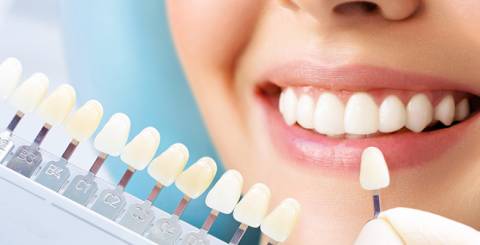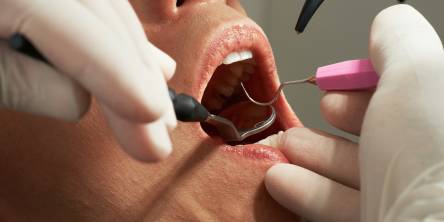Debunking the Top 7 Myths About Cosmetic Dentistry

Cosmetic dentistry has grown in popularity recently, allowing people to improve their smiles and confidence. Despite its rising popularity, cosmetic dentistry has become saturated with myths and misconceptions. This article will debunk the top seven myths, shedding light on the reality behind these common misconceptions.
Myth 1: Cosmetic dentistry is only about aesthetics
One of the most common misconceptions about cosmetic dentistry is that its main objective is to improve the look of the teeth. While improving a smile's visual attractiveness is essential to cosmetic dentistry, it is not the primary purpose. Cosmetic dentists are also educated to deal with functional issues as well. Dental implants, veneers, and teeth whitening procedures not only improve the look of the teeth, but they may also enhance general oral health and functioning.
Myth 2: Cosmetic dentistry is painful
Many people avoid cosmetic dental procedures because they believe they are painful. What is true is that technological and procedural breakthroughs have considerably decreased the discomfort associated with these treatments.
Local anesthetics are currently used by dentists to numb the treatment area, ensuring that patients experience minimum pain or discomfort during the procedure. Moreover, many cosmetic procedures use less invasive techniques, which results in shorter recovery times and less post-procedure discomfort.
Myth 3: Cosmetic dentistry is only for celebrities
Another common misconception is that cosmetic dentistry is only available to celebrities and wealthy people. Cosmetic dentistry is available to a wide range of people. While some procedures may be more expensive, many treatments are affordable and can be adjusted to match any budget. Cosmetic dentistry is about helping people from all walks of life get the confidence that comes with a healthy, beautiful smile.
Myth 4: Cosmetic procedures are permanent
Some people are concerned about having cosmetic dentistry procedures because they believe the effects will be permanent and irreversible. Many cosmetic treatments produce long-lasting benefits, although they are not always permanent.
Teeth whitening, for example, may require touch-ups over time, and dental veneers may need to be replaced after several years of use. People seeking cosmetic dentistry should have reasonable expectations and recognize that regular maintenance may be essential to maintain the results in the long run.
Myth 5: Cosmetic dentistry is a quick fix
While certain cosmetic procedures can provide instant effects, the concept that cosmetic dentistry is a quick fix for tooth problems is a fiction. Cosmetic treatment planning and execution need meticulous attention and accuracy. The treatment timeline may vary depending on the procedure's complex nature.
For example, orthodontic treatments for correcting misaligned teeth might take many months, but teeth whitening can be completed in a single visit. People must consult their dentist to determine the estimated timing for their cosmetic procedure.
Myth 6: Cosmetic dentistry is only for young people
There is a common misconception that cosmetic dentistry is only for young people who want to improve their smiles. The reality is that cosmetic dentistry is appropriate for people of all ages. Dental implants, dentures, and crowns are popular among older people who want to restore functionality and improve their oral health. Cosmetic dentistry is a broad subject that caters to the different needs of people at different stages of life.
Myth 7: All dentists are cosmetic dentists
Not all dentists specialize in cosmetic dentistry. Cosmetic dentistry requires additional training and experience in addition to general dentistry. While all dentists are educated to understand oral health and treat dental problems, cosmetic dentists focus on the aesthetic side of dentistry. To achieve the best possible results from cosmetic dental procedures, choosing a dentist with particular training and expertise in cosmetic dentistry is essential.
Similar Articles
The desire for a healthy smile drives approximately 4 million people toward teeth straightening procedures. When it comes to straightening teeth, lingual braces offer a discreet alternative to traditional braces and clear aligners.
As we grow older, our dental needs evolve significantly. The carefree days of childhood tooth fairy visits transform into the more complex world of adult dental care. After age 25, many adults begin to notice changes in their oral health.
Missing teeth can cause a wide range of oral health issues. Nonetheless, over 120 million Americans are missing at least one tooth, and the figure is anticipated to climb as time passes.
A dental emergency doesn’t make an appointment. It shows up unannounced and unapologetic, usually in the middle of the night or during a meal that was supposed to be fun
A dental emergency can strike fast and without warning—during dinner, in the middle of the night, or just before a big meeting.
A wide range of factors can have a direct effect on your oral health. A balanced diet is essential, as is good oral hygiene and regular dental examinations. Many individuals think that nutrition alone can't improve oral health.
The results of wearing Invisalign aligners look stunning, and they are way more convenient than traditional braces. However, no one speaks about what it feels like to wear the same pair of traces around 22 hours a day
Temporomandibular Joint Disorder, commonly known as TMJ, is a condition that causes pain and dysfunction in the jaw joint and surrounding muscles. This disorder can arise from various factors, including teeth grinding, arthritis, jaw injuries, poor posture, or stress.
A root canal is a common treatment that people pay the dentist a visit for. According to a study, root canal treatment claims were up by 42% in the last five years.









